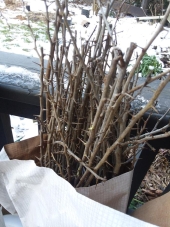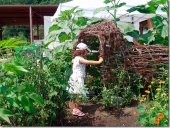








"You must be the change you want to see in the world." "First they ignore you, then they laugh at you, then they fight you, then you win." --Mahatma Gandhi
"Preach the Gospel always, and if necessary, use words." --Francis of Assisi.
"Family farms work when the whole family works the farm." -- Adam Klaus




Permies is awesome!!!
 1
1




Standing on the shoulders of giants. Giants with dirt under their nails
 1
1




Expect the worst, do your best, and smile — after all, you have it waaaaay better than most, on this flying spinning rock.
 2
2




A build too cool to miss:Mike's GreenhouseA great example:Joseph's Garden
All the soil info you'll ever need:
Redhawk's excellent soil-building series









Permies is awesome!!!
 1
1




Expect the worst, do your best, and smile — after all, you have it waaaaay better than most, on this flying spinning rock.
 3
3




Just my 2 cents...
Money may not make people happy but it will get you all the warm fuzzy puppies you can cuddle and that makes most people happy.




Permies is awesome!!!
 1
1




"You must be the change you want to see in the world." "First they ignore you, then they laugh at you, then they fight you, then you win." --Mahatma Gandhi
"Preach the Gospel always, and if necessary, use words." --Francis of Assisi.
"Family farms work when the whole family works the farm." -- Adam Klaus
 1
1




Just my 2 cents...
Money may not make people happy but it will get you all the warm fuzzy puppies you can cuddle and that makes most people happy.




Lisa Sampson wrote:Cows aren't the brightest creatures and will find a multitude of ways to get themselves into trouble no matter what fencing you use. Every bois darc I have ever seen has thorns. Big long pokey ones that seem to want to jab in and stay stuck. They seem to hurt a lot more than they ought to and to get infected a lot more than they ought to and just generally suck.
Make sure your chimney has a spark arrestor on it if you are burning it. Its very sparky wood but otherwise it burns hot and clean.
A build too cool to miss:Mike's GreenhouseA great example:Joseph's Garden
All the soil info you'll ever need:
Redhawk's excellent soil-building series





 1
1




Pecan Media: food forestry and forest garden ebooks
Now available: The Native Persimmon (centennial edition)




Permies is awesome!!!
 1
1




Just my 2 cents...
Money may not make people happy but it will get you all the warm fuzzy puppies you can cuddle and that makes most people happy.

 1
1




Some places need to be wild

|
Is that almond roca? Did you find it in the cat box? What is on this tiny ad?
Play Your Way to a Sustainable Lifestyle: Uncover Permaculture Principles with Each Card
https://gardener-gift.com/
|




